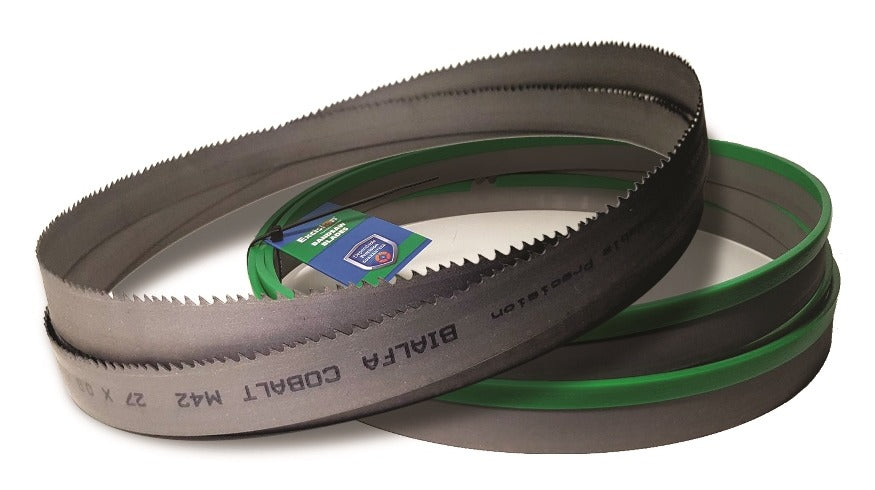The following are some ‘Rules-of-Thumb’ that are industry proven and will guarantee longer Blade life. Information provided by Excision.
Running-in Procedure (also called Break-in Procedure) For the first 15 minutes of a new blade being fitted to the machine, maintain normal blade speed & reduce the down feed. The blade should effectively rub the material to be cut & only produce swarf as 'filings'. This is best achieved by cutting a solid piece of mild steel with half the normal down feed pressure. The process creates a honing effect to the tips of the teeth where they are microscopically dulled.
After 15 minutes of ‘running in’ The down feed rate can be increased to a normal rate & cutting can proceed.
Blade speed (Optimum) Mild steel: 70 – 80 metres/minute Stainless steel: 45 – 55 metres/minute

Governing the correct down feed rate: You can tell this by looking at the Swarf, what you want is ‘fingernail’ type swarf curls that only do 1 to 1.5 curls (max), and aren’t blue/darkened with heat. (NB. You will get a bit of a range of swarf sizes, but you will see it when the main of the swarf curls are like this.)
Blade Tension: This is critical for accuracy in cutting and for maximum Blade life. To manually check for sufficient tension, ensure the Machine is turned off and place the palm of the hand on the back of the Blade, in between the Blade Guides. By pressing down towards the bed of the Machine, there should be nothing more than 1-2mm of movement.
Key bandsaw blade terms with definitions to help you understand the meaning of bandsaw jargon.
-
Blade Back: The body of the Bandsaw blade not including tooth portion.
-
Thickness: The Dimension from side to side on the blade.
-
Width: The nominal dimension of a Bandsaw blade as measured from the tip of the tooth to the back of the band.
-
Set: The bending of teeth to right or left to allow clearance of the back of the blade through the cut.
-
Kerf: Amount of material removed by the cut of the blade.
-
Tooth Pitch: The distance from the tip of one tooth to the tip of the next tooth.
-
TPI: The number of teeth per inch as measured from gullet to gullet.
-
Gullet: The curved area at the base of the tooth.
-
Gullet Depth: The distance from the tooth tip to the bottom of the gullet.
-
Tooth Face: The surface of the tooth on which the chip is formed.
-
Chip: The piece of material removed by the tooth as it cuts.
-
Tooth Rake Angle: The angle of the tooth face measured with respect to a line perpendicular to the cutting direction of the saw.
-
Skip Tooth: The teeth on skip tooth blades have a zero degree rake angle and expanded gullets allowing the blade to cut softer materials without overloading the gullets with chips.
-
Hook Tooth: The teeth on hook tooth blades have a positive rake angle and a large gullet.
-
Regular Tooth: Blades with regular tooth shape have zero degree rake.
-
Vari-Pitch: Blades with vari-pitch or variable-pitch teeth are designed for metal cutting. The size of the tooth and the depth of the gullet changes from one tooth to the next.
Buy Blades here

